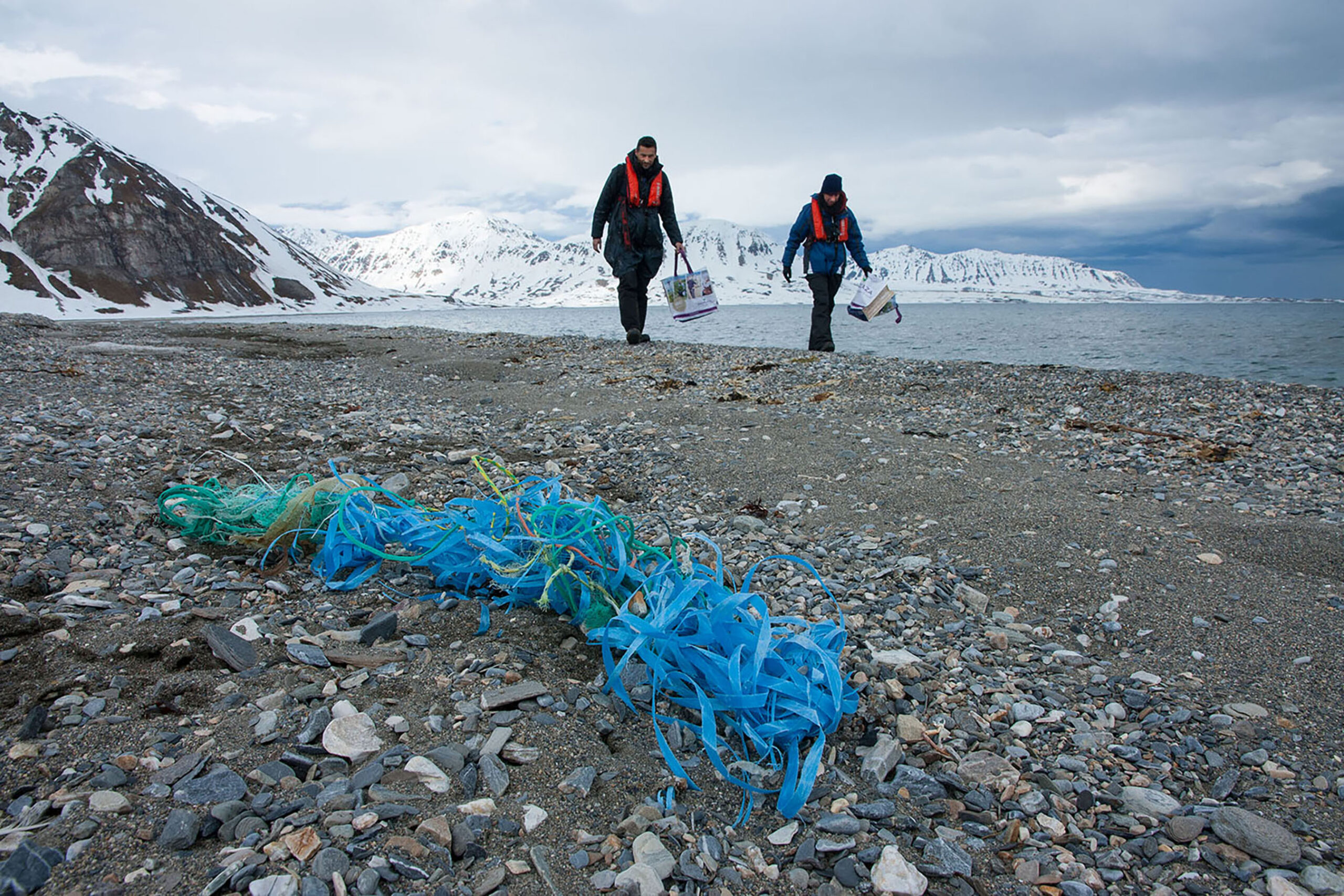Wouter Jan Strietman tries to determine its origins using CSI-style detective work, in the hope of stemming the tide.
Drifting plastic can cover enormous distances. By way of illustration, Wouter Jan Strietman, a researcher at Wageningen Economic Research, pulls up an animation made by oceanographers at Utrecht University. ‘Imagine, we throw plastic bottles into the sea at IJmuiden,’ he says. Dots swarm across the screen, moving from IJmuiden into the ocean. ‘Within a year the rubbish is in northern Norway. From there, it goes to Spitsbergen and Iceland. Some of it drifts on to Greenland and beyond, and some of it boomerangs back towards Europe.’ The image is clear and concerning: waste comes and goes from far and wide. How do you deal with that? Removal, along the lines of the Ocean Clean Up project, is a noble but fairly hopeless task. A lasting solution requires a different approach. ‘Plastic in the ocean is the result of human actions,’ Strietman continues. ‘If you want a structural solution for the plastic, you have to know where it comes from and how it ends up in the ocean. That is research into human and economic activities.’
No shit, Sherlock
Strietman and his Arctic Marine Litter project have been doing this detective work for three years. Together with local groups and other stakeholders, they run workshops to try to trace locally found waste. They have already visited beaches on Spitsbergen, Iceland, Greenland, and the island Jan Mayen. And, closer to home, De Grient in the Wadden Sea. The coasts of Canada and Russia are on their wish list, but the coronavirus has thrown a spanner in the works for now. The method Strietman has developed and applied, Plastic Litter ID, is simple. Collect plastic, sort it and try to trace its origin as far as possible. He likes to use the term plastic detective, which is exactly what he is. Like a kind of Sherlock Holmes, he deduces as much information as possible from the recovered plastic. By zooming in on objects, or by zooming out in search of patterns.
This results in some impressive feats. Strietman produces a small yellow plastic object found on the beach of Jan Mayen. It looks like a miniature cruise ship. Small letters on the bottom read Mauretania. ‘When I started googling, I ended up with a series of model boats that were added as freebies to Sugar Pops boxes in the United Kingdom. That’s a kind of breakfast cereal. But wait for it: that was in 1958! Of course I don’t know how long it had been lying on the beach. But it does demonstrate two things: plastic travels far and stays intact a long time.’
For Men
Zooming out is just as useful. ‘If you sort objects by type, you start seeing patterns,’ says Strietman. ‘There is always a story behind it.’ The language on labels, for example, can be revealing. Or the fact that almost all the shampoo bottles and deodorant spray cans found on the beach on Spitsbergen are for men and in Russian. That turned out to match the fishing nets they found, which mostly came from Russian boats. Strietman: ‘Most of the fleets in the area come from Russia or Norway.’
Analysing the nets brought something else to light, too. ‘More than 90 per cent of the nets turned out to have been cut loose during maintenance work. That shocked me at first, but it is actually positive, in a way. The nets did not end up in the ocean accidentally, which means that littering could be prevented. We saw the same pattern in other research locations. We don’t yet know which fishers are responsible for it, but we do know it is preventable waste.’
Fellow travellers
Strietman always works with local stakeholders. ‘It is super important for them to know where the waste is coming from. In Greenland, for example, they thought most of the rubbish floated in from distant places. Our research showed that almost all of it came from local sources. Now they are going to see how they can tackle that locally.’ Solutions for the fishing net problem are being sought at a national level. Strietman has also been asked to take a seat on the Arctic Council’s waste working group.
Plastic travels far and stays intact a long time.
Tracing the source of waste in not the only focus, though. Within WUR, Strietman is working together with marine and environmental researchers who study the interactions between plastic and local environments. ‘Marine biologists are interested in the organisms that travel with the plastic. Those are potentially invasive species. At the same time, those organisms are evidence of the journey the plastic has made. That kind of multidisciplinary collaboration is what makes it so interesting.’
Klokhuis prize
The Wageningen waste project is competing for the Klokhuis science prize awarded by a children’s TV programme, under the banner ‘The Plastic Soup Detectives.’ Strietman is among the final 10 contenders. Voting is still open on the Klokhuis website, and the winner will be announced on Sunday 15 November. In 2016 WUR researcher Wieger Wamelink won the inaugural Klokhuis prize with his study of gardening on Mars.

 Researchers clear up plastic in the Arctic Circle. Photo: Wouter Strietman
Researchers clear up plastic in the Arctic Circle. Photo: Wouter Strietman